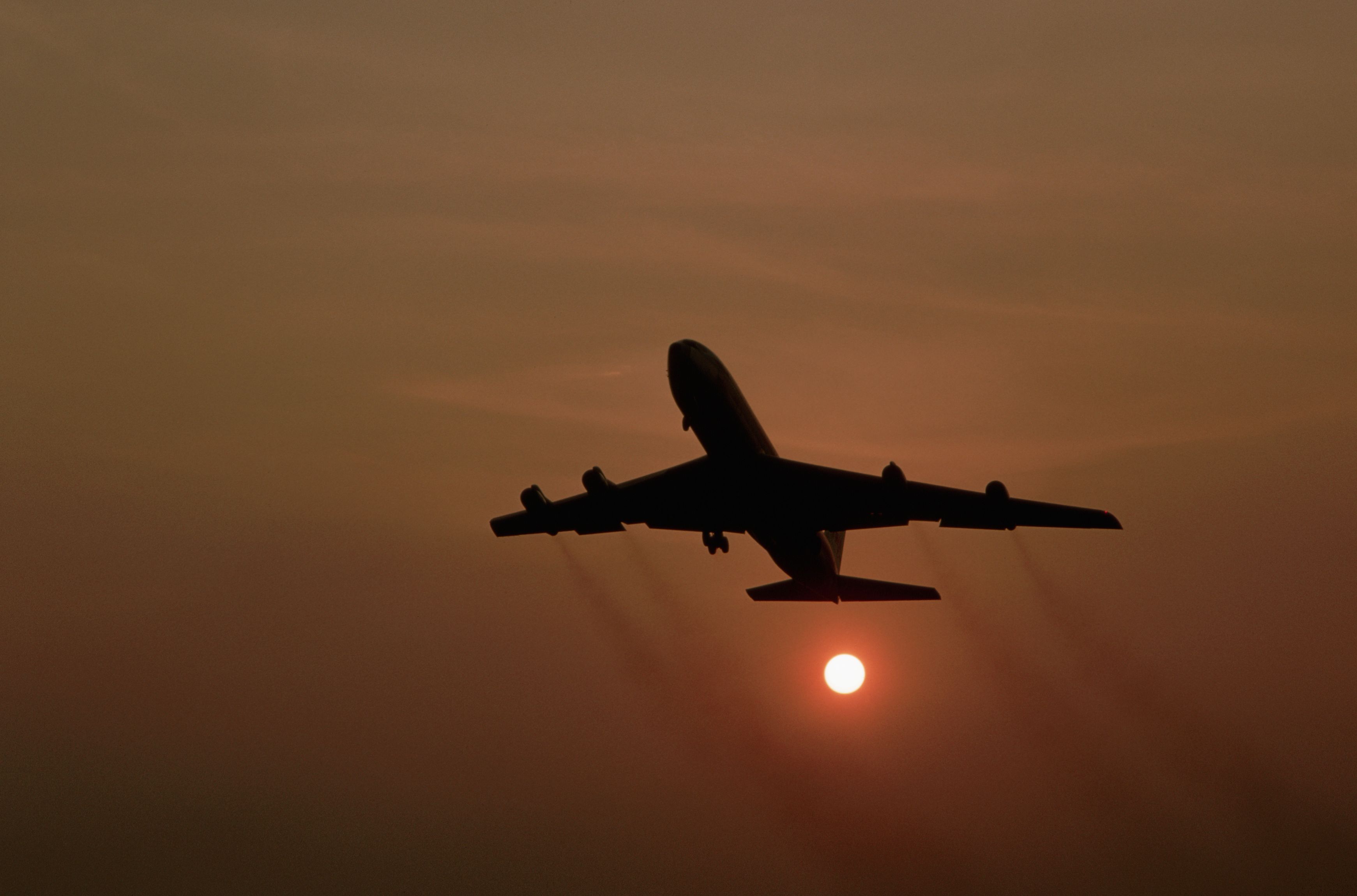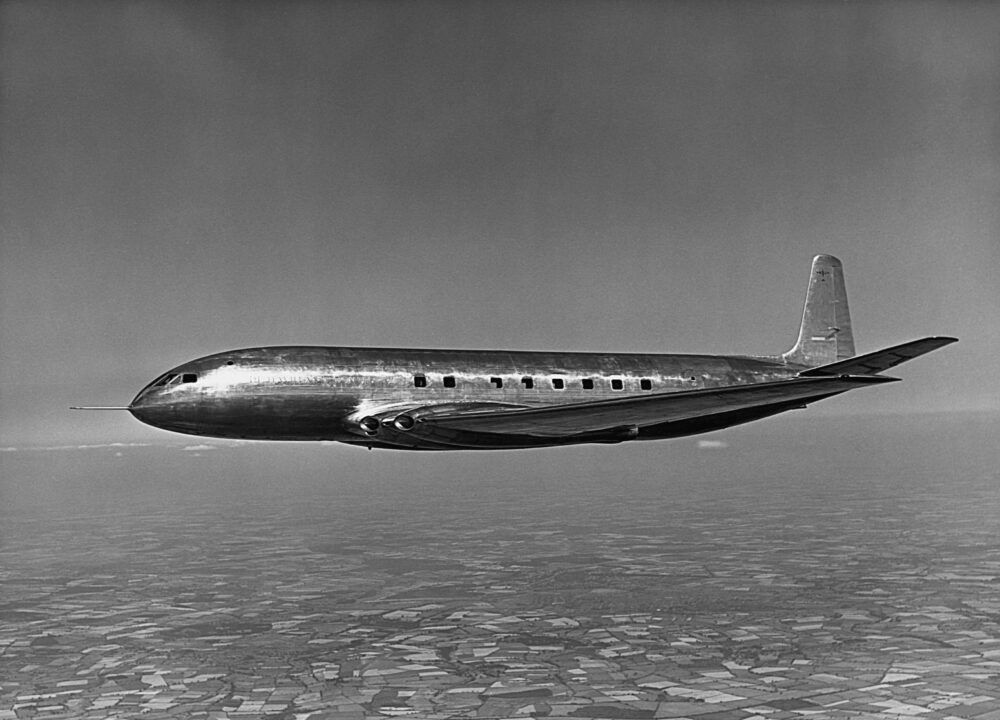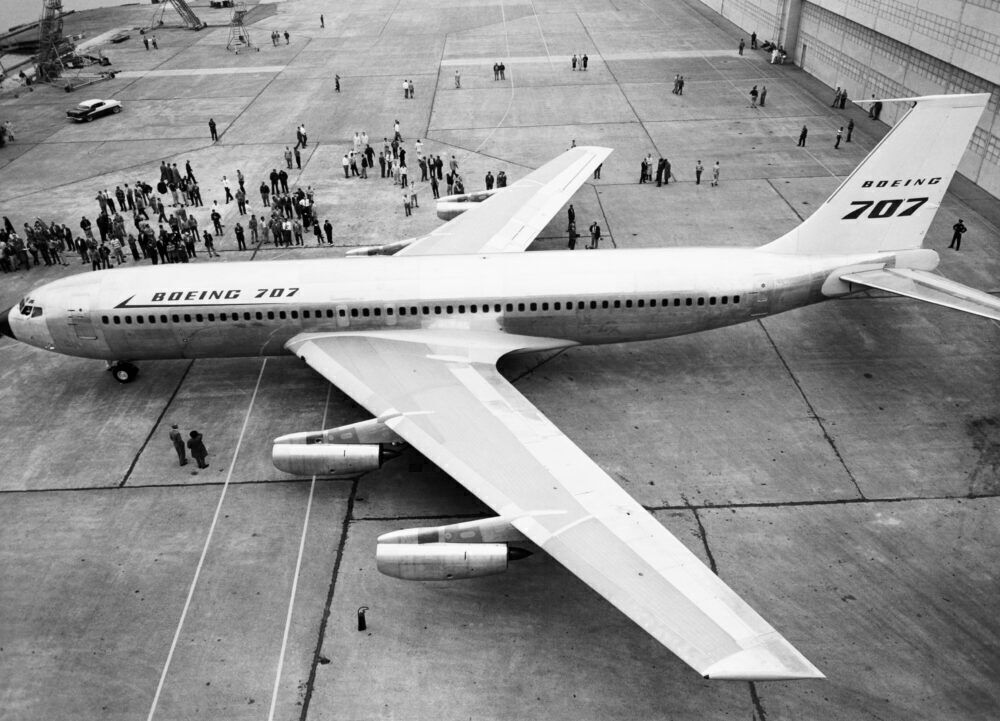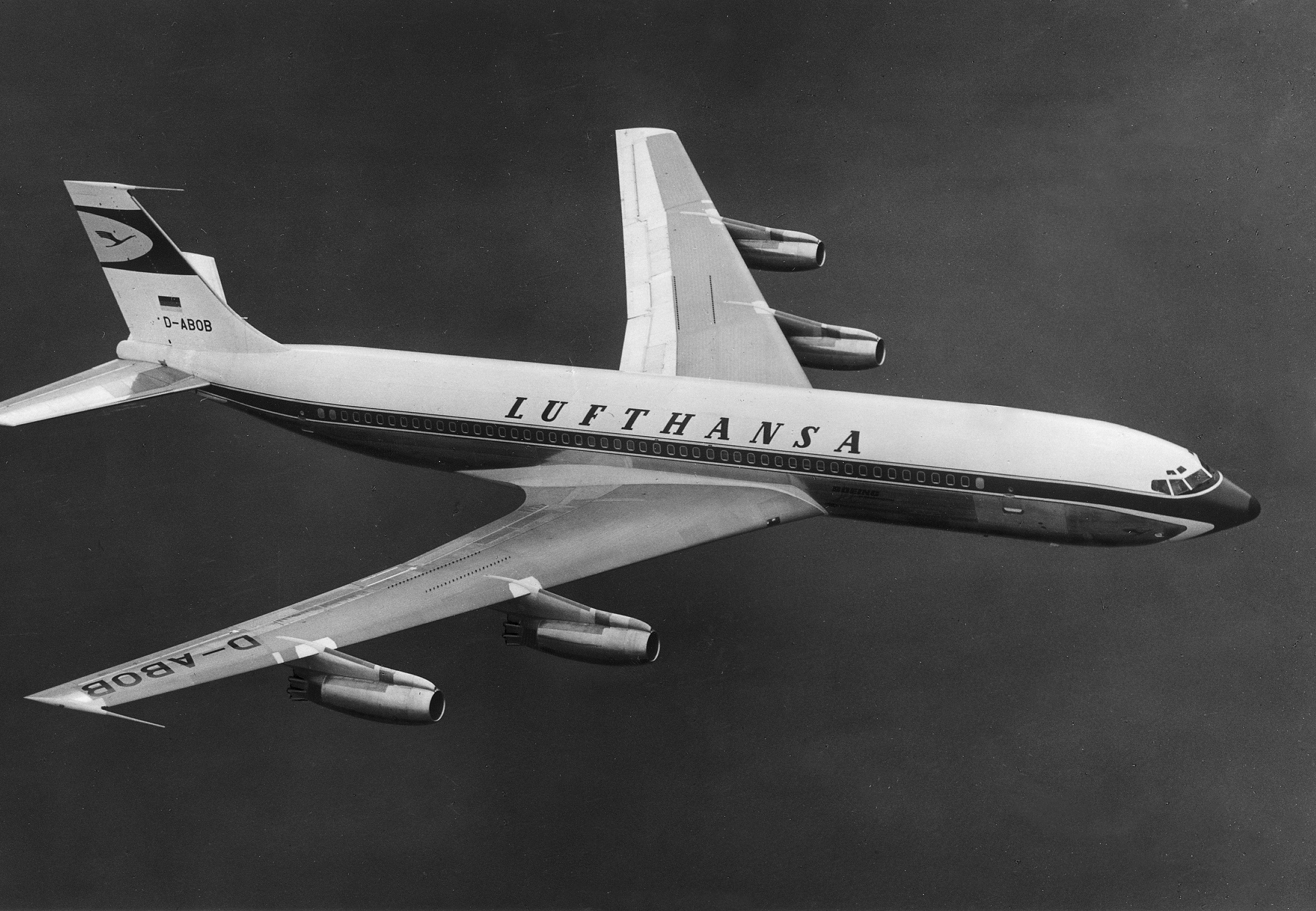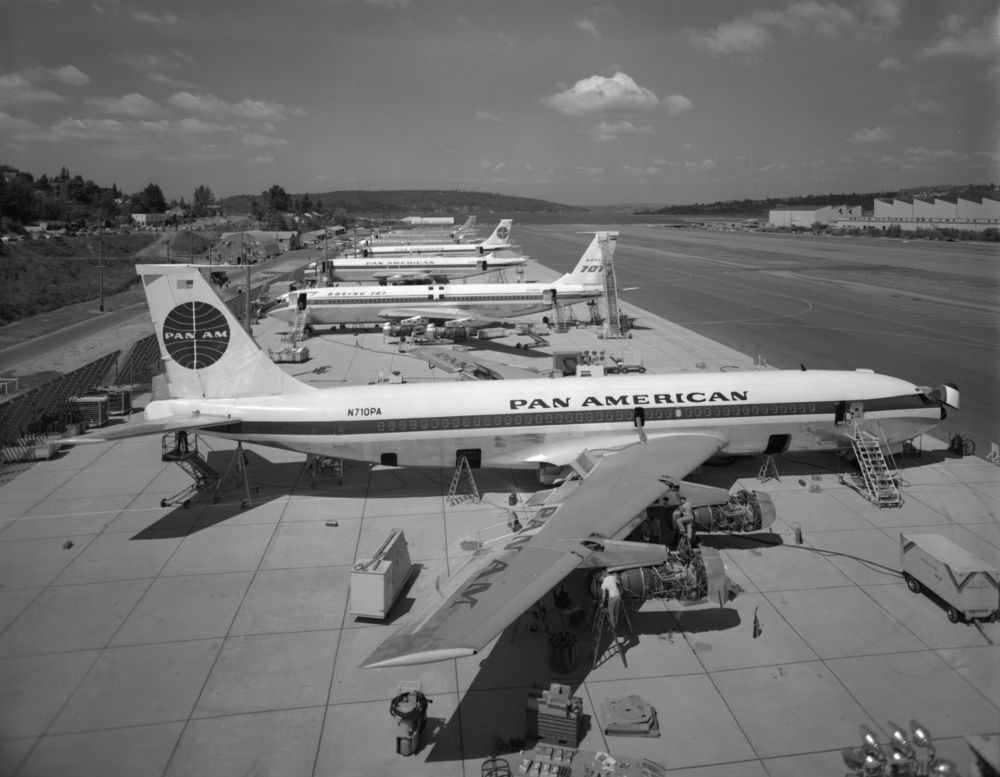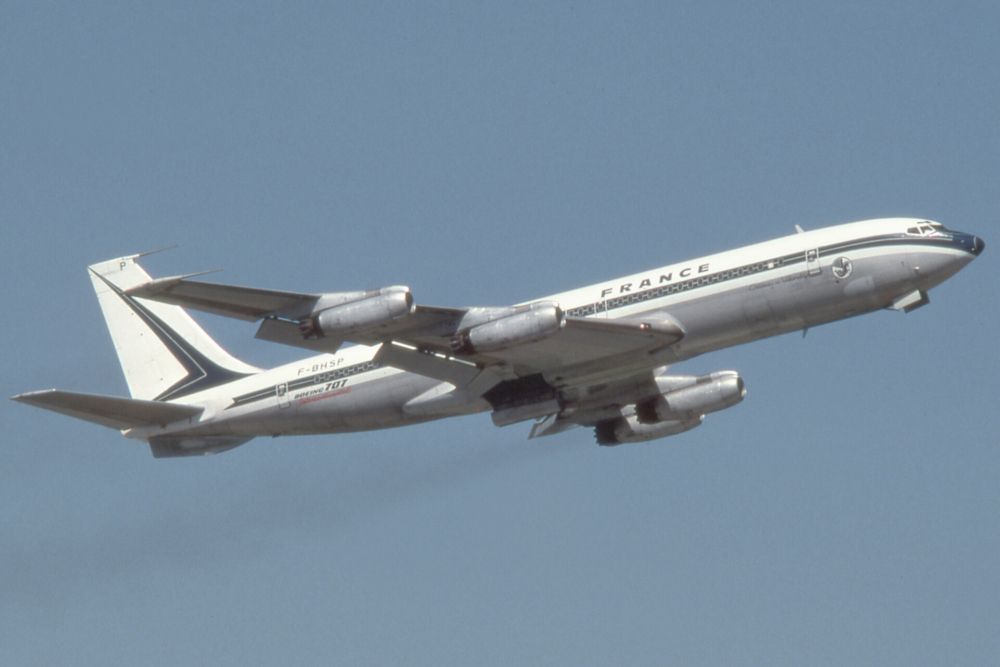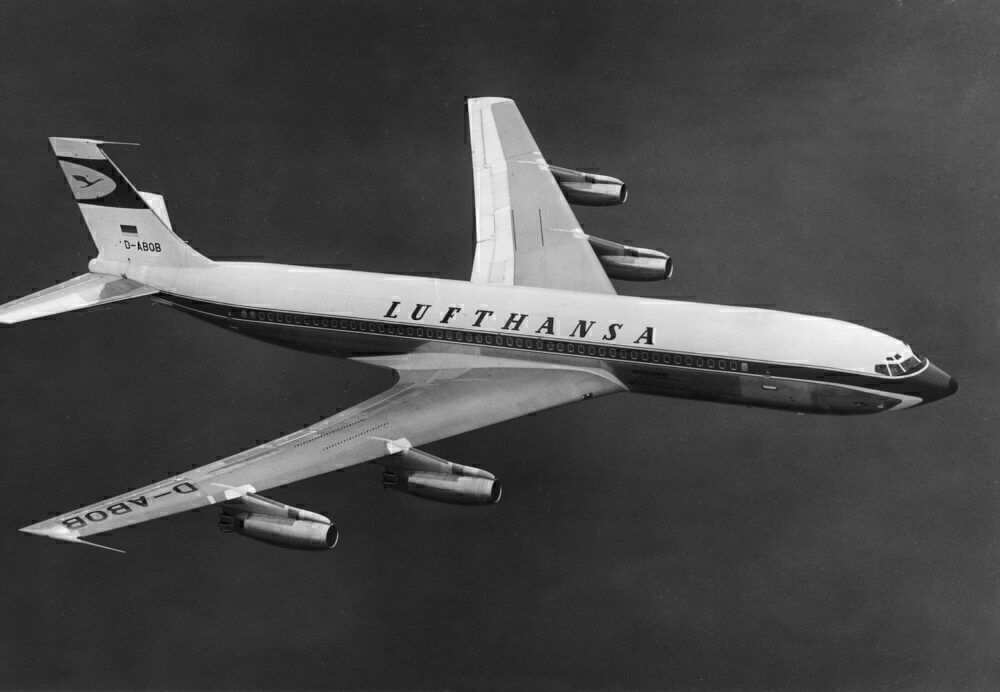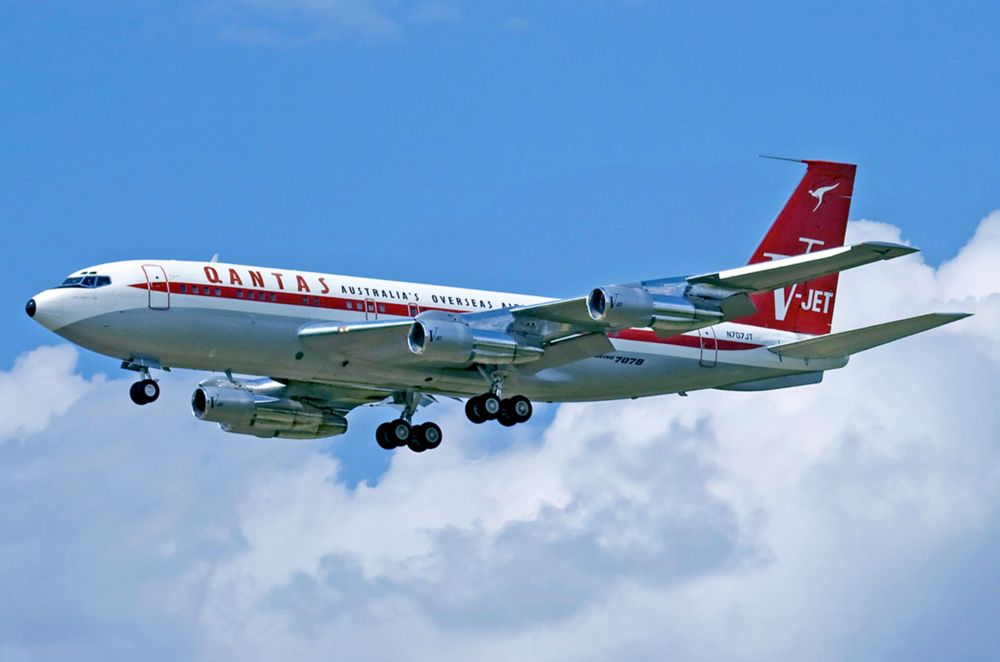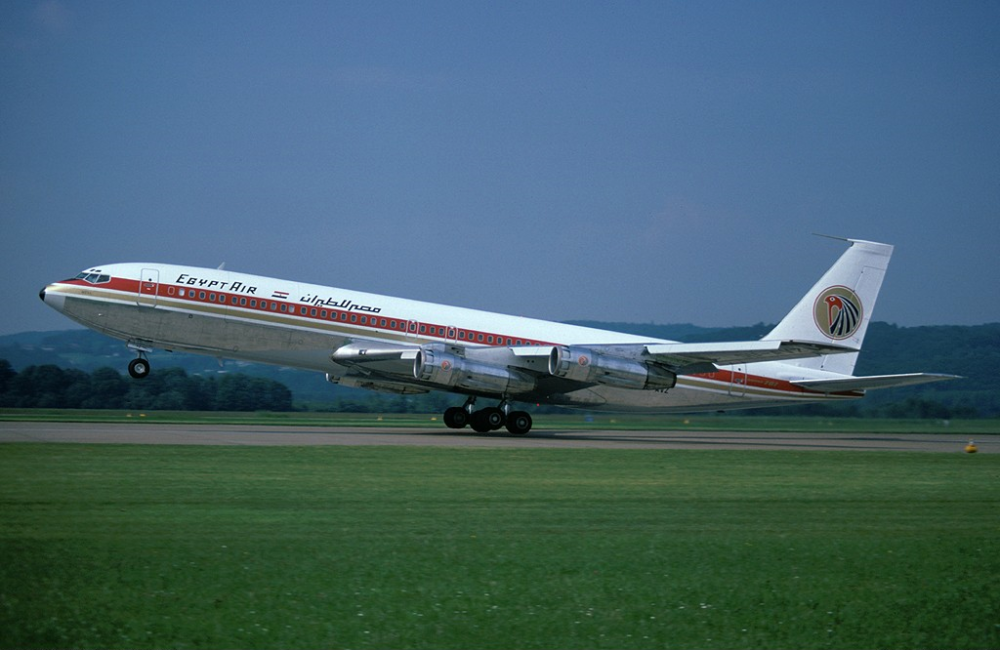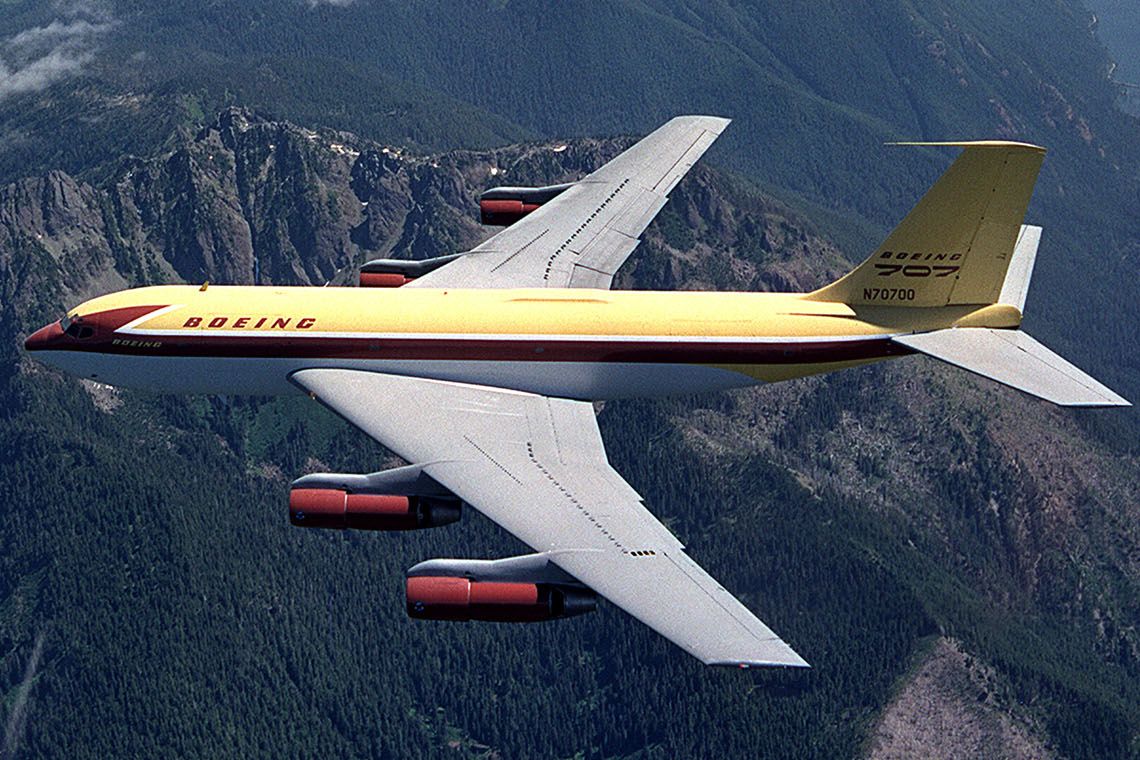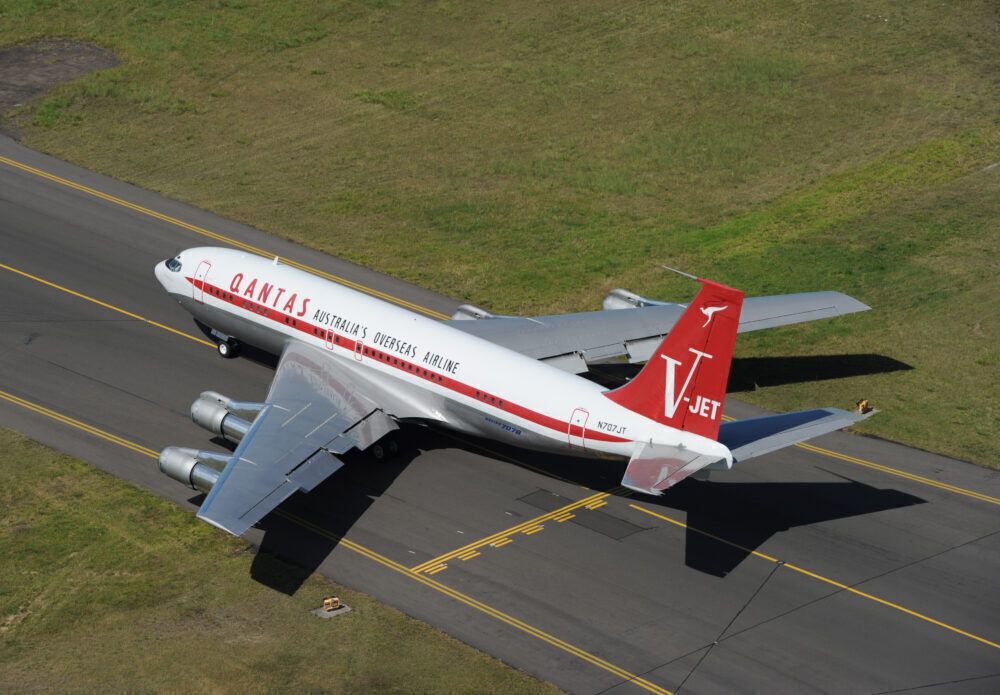The Boeing 707 is one of the most important aircraft to date. It was the first commercially successful jet, ushering in the age of jet travel. The aircraft also marked the start of Boeing’s rise in developing commercial aircraft and the beginning of the 7X7 series. It was initially popular in the US, but soon entered service with airlines around the world.
The Boeing 707
The Boeing 707 was not the first jet aircraft developed. That accolade goes to the British manufacturer de Havilland and its Comet aircraft. It first flew in 1949 and entered service with BOAC in 1952. It suffered several early setbacks, with aircraft losses due to airframe and pressurization issues. This damaged confidence in the Comet and paved the way for other manufacturers to be more successful – although the improved later Comet saw plenty of use.
Boeing followed with the 707. Its first jet launched in 1957 and entered service in 1958. There were several variants of the 707. The first variant, the 707-120, was soon upgraded to the 707-120B with more powerful engines and the 707-220.
Significant improvements followed in 1959 with the 707-320. This was a stretched variant, with increased fuel capacity and range. Critically, this introduced transoceanic possibilities and was by far the most ordered variant. The 707-320B added aerodynamic improvements, and the 707-320C added the ability for combined cargo and passenger use (although most deliveries were higher capacity passenger models).
More than 850 707s were built, and over 700 entered airline service, but there have been plenty of government, air force, and other private operators. Most famously, 707s served as US Air Force One until the current 747s were introduced.
Very popular in the US
The 707 was unsurprisingly most successful in Boeing’s home market of the United States. It was operated by many of the US legacy carriers. Pan American World Airways (Pan Am) was the launch customer for the type in October 1958. It went on to be the largest operator, retiring its last aircraft in 1981.
Delta Air Lines and United Airlines were notable exceptions. They both introduced the Douglas DC-8 in 1959 and did not operate the 707. United, however, was a major operator of the shortened Boeing 720 variant.
Using data obtained from AeroTransport Data Bank (ATDB.aero), the main airlines operated the following (with numbers based on total orders placed by the airline):
- Pan Am: 133 aircraft in total, including 61 707-320B and 36 707-320C aircraft.
- TWA: 128 aircraft, including 41 707-320B and 18 707-320C aircraft.
- American Airlines: 124 aircraft, including 10 707-320B and 40 707-320C aircraft.
- Continental: 18 aircraft.
- Braniff International Airways: 19 aircraft.
- Northwest Airlines: 36 aircraft, including 26 707-320s.
Stay informed: Sign up for our daily and weekly aviation news digests.
European Airlines
European airlines were also significant users of the 707. As with US operators, 707s entered service on medium-haul routes but soon operated transatlantic with many airlines.
The largest operator was Air France with 45 aircraft (just one 707-120 and the others all 707-320s). UK airlines were close behind. BOAC operated 34 707s. These were mostly the 707-420 variant fitted with Rolls-Royce Conway engines instead of the JT4A engines. British Caledonian Airways operated 30 aircraft.
Other significant operators included Belgian airline SABENA with 30 aircraft, Lufthansa with 24 aircraft, Aer Lingus with 13 aircraft, Olympic Airlines with nine aircraft, and TAP with five.
South American airlines
The 707 flew with many of the main airlines at the time. These included VARIG with 20 aircraft, LATAM Chile with 14 aircraft, Aerolineas Argentinas with 11, and Aviana also with 11.
Asia and the Middle East
Pakistan International Airlines was one of the first, and the largest operators in Asia, with 37 Boeing 707s. Air India operated 11, El Al 24 aircraft, and Iran Air 14.
Qantas operated 34 aircraft, formerly as Qantas Empire Airways. Qantas operated the specially modified 707-138 from 1959. In the mid-1960s, these were joined by the 707-320s (in total, it operated 13 707-138s and 21 707-320s). They formed the major part of Qantas' long-haul fleet until the 1970s.
Other Asia operators included Cathay Pacific with up to 14 aircraft, Korean Air with 11, and Japan Airlines with two.
Africa
In Africa, Egyptair, South African Airways, and Ethiopian Airlines have all been significant operators. Egyptair ordered 21 aircraft over the years, and it marked a shift to a majority Boeing fleet (after it retired the Comet in the mid-1970s, it mainly operated the Boeing 707 and 737). South African Airways ordered 17 aircraft, and Ethiopian Airlines nine aircraft.
Air Zimbabwe operated the 707 on a second hand basis, using aircraft sourced from Lufthansa. It flew the type between 1985 and 1998.
What about the first 707?
Before the 707 became a worldwide success, there was a prototype – the Boeing 367-80. For its next big plane, Boeing wanted to create a jet-powered military transport airplane but failed to get the US Air Force excited. With no funding available, the planemaker decided to take a gamble and pour $16 million into the project (two-thirds of the company’s net profits until then).
After several design changes, the 367-80 came into being. Because it was modeled to be a military tanker, the 367-80 (also known as Dash-80) had few windows and no seats. While Boeing went on to build 732 units of the military version, it also targeted the airline industry.
In 1955, the company decided to display the Dash-80 to airline executives gathered in Seattle for the annual IATA convention, which coincided with the Gold Cup hydroplane races held on Lake Washington. Test pilot Tex Johnston turned what was supposed to be a simple flyover into a thrilling event by performing a couple of barrel rolls, impressing the gobsmacked airline officials.
Soon after, Pan Am placed an order of 20 Dash-80s after convincing Boeing to make some design changes, and the rest is history!
Boeing 707s still in service
The Boeing 707 is not in regular airline service anymore. TWA operated the last commercial flight in the US in 1983, but it stayed in commercial use with other - Iranian Saha Airlines operated it until 2013.
But plenty of aircraft remain flying. Today, most are in military service. The US Air Force operates more than 40 707 aircraft - all military variants based on the 707, including the E-3 Sentry and the E-8. NATO, the UK RAF, and the Royal Saudi Air Force also operate sizeable fleets of E-3 aircraft.
US operator Omega Air still has three 707s as refueling aircraft in its fleet, although data from ch-aviation shows that only one is active. One of these appeared in Boeing's lineup of all 7X7 series aircraft in 2016 as part of the 100-year celebrations.
Another 707 that still remains airworthy has been owned and flown for many years by John Travolta. He purchased an ex-Qantas Boeing 707-138 aircraft in 1988 and had it re-registered as N707JT. In 2017, he donated the aircraft to the Historical Aircraft Restoration Society, based at Shellharbour Airport in Wollongong, Australia.
The Boeing 707 is an important part of aviation history. It has seen service with many airlines around the world. This article has looked at major orderers and operators, but there are plenty more. Feel free to discuss further in the comments.
Source: ATDB.aero

